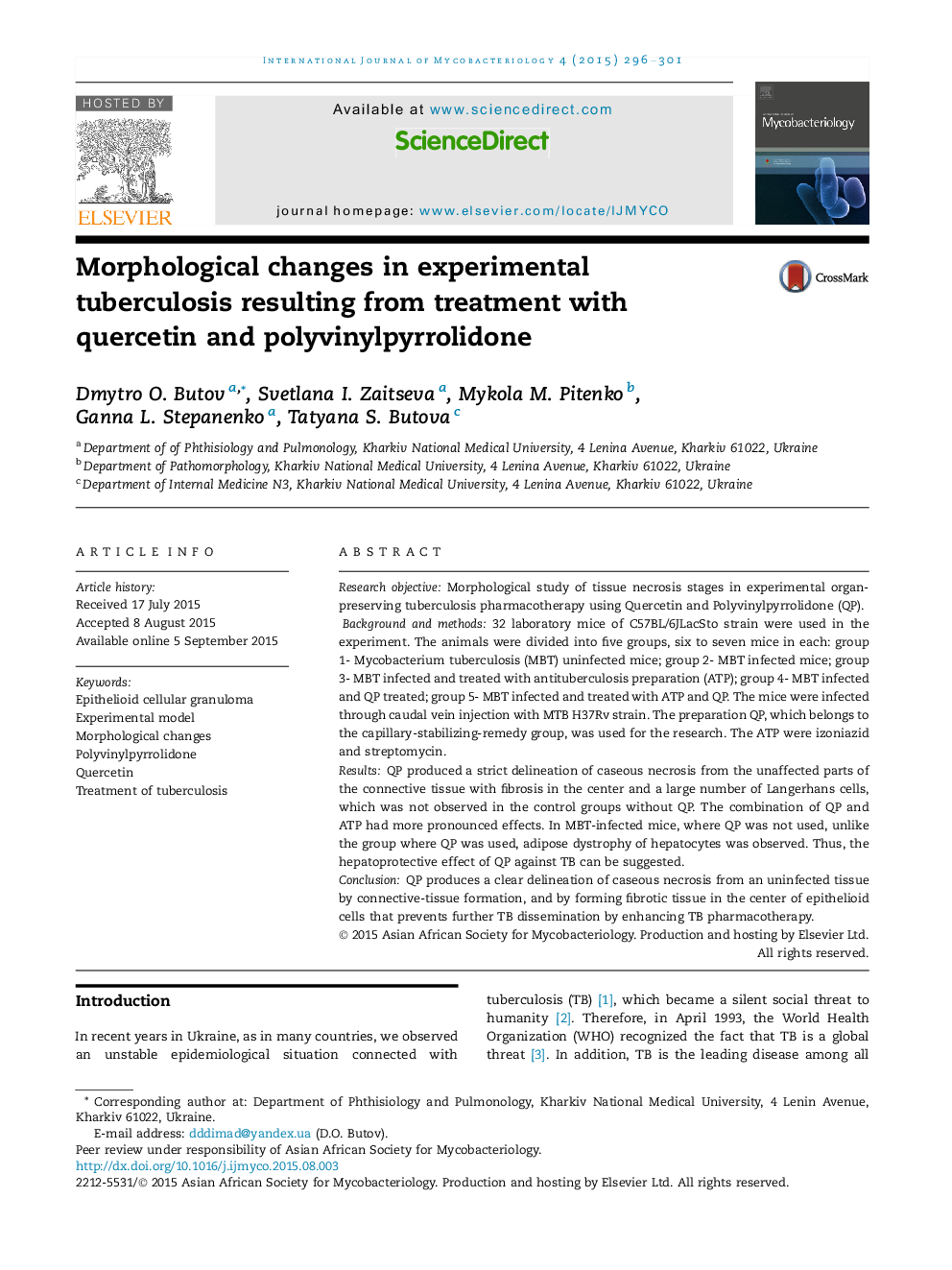| Article ID | Journal | Published Year | Pages | File Type |
|---|---|---|---|---|
| 3404953 | International Journal of Mycobacteriology | 2015 | 6 Pages |
Research objectiveMorphological study of tissue necrosis stages in experimental organ-preserving tuberculosis pharmacotherapy using Quercetin and Polyvinylpyrrolidone (QP).Background and methods32 laboratory mice of C57BL/6JLacSto strain were used in the experiment. The animals were divided into five groups, six to seven mice in each: group 1- Mycobacterium tuberculosis (MBT) uninfected mice; group 2- MBT infected mice; group 3- MBT infected and treated with antituberculosis preparation (ATP); group 4- MBT infected and QP treated; group 5- MBT infected and treated with ATP and QP. The mice were infected through caudal vein injection with MTB H37Rv strain. The preparation QP, which belongs to the capillary-stabilizing-remedy group, was used for the research. The ATP were izoniazid and streptomycin.ResultsQP produced a strict delineation of caseous necrosis from the unaffected parts of the connective tissue with fibrosis in the center and a large number of Langerhans cells, which was not observed in the control groups without QP. The combination of QP and ATP had more pronounced effects. In MBT-infected mice, where QP was not used, unlike the group where QP was used, adipose dystrophy of hepatocytes was observed. Thus, the hepatoprotective effect of QP against TB can be suggested.ConclusionQP produces a clear delineation of caseous necrosis from an uninfected tissue by connective-tissue formation, and by forming fibrotic tissue in the center of epithelioid cells that prevents further TB dissemination by enhancing TB pharmacotherapy.
